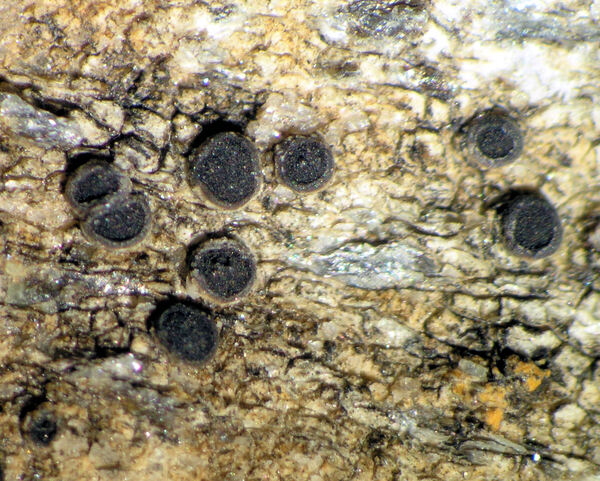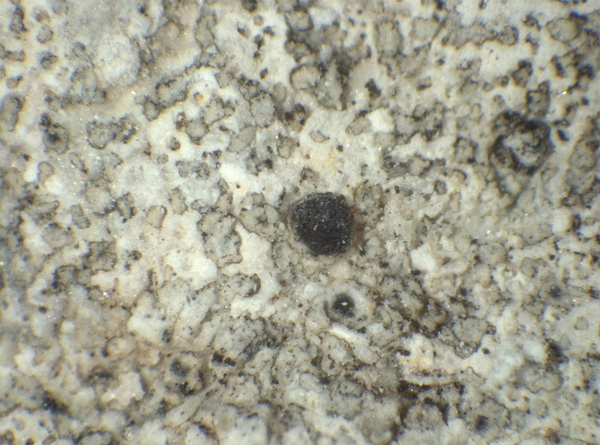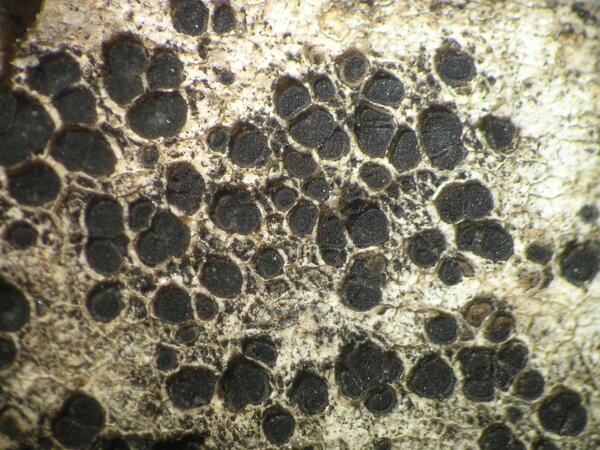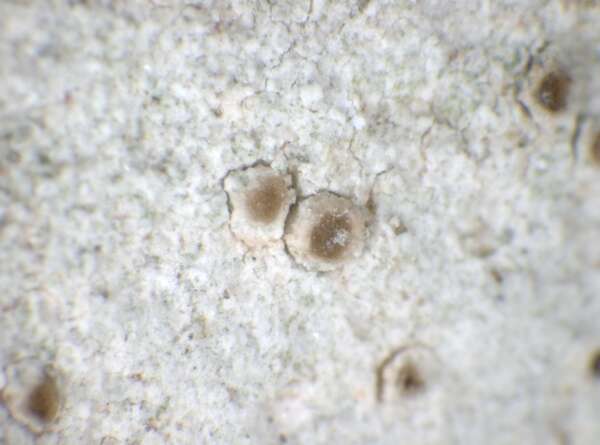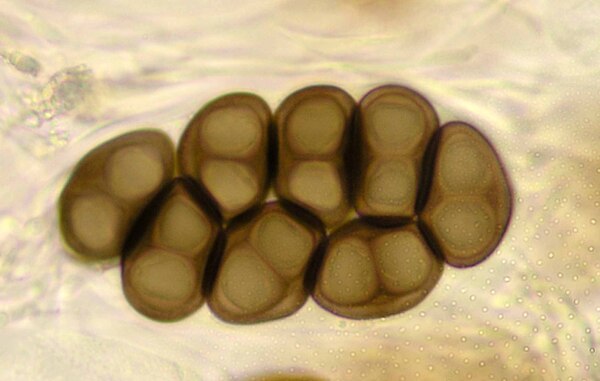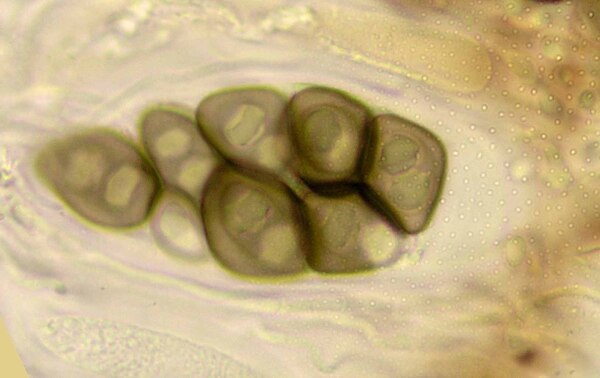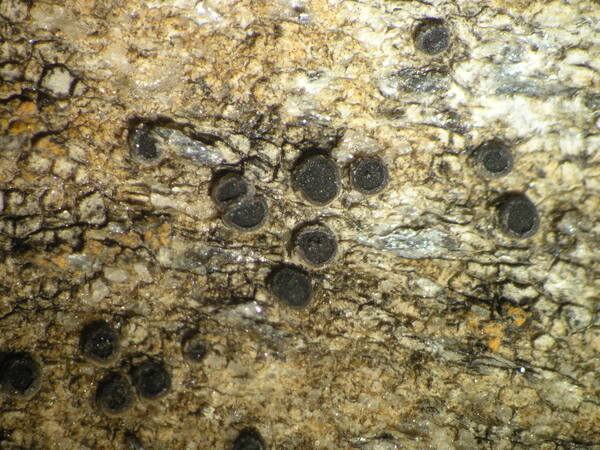Rinodina tunicata H. Mayrhofer & Poelt
Bibl. Lichenol., 12: 153, 1979.
Synonyms:
Distribution: C - Tosc (TSB 35281), Abr (Nimis & Tretiach 1999), Mol (Nimis & Tretiach 2004, Caporale & al. 2008), Sar. S - Pugl (Nimis & Tretiach 1999), Cal (Rambold & al. 1994), Si (Nimis & al. 1996b, Giralt & Llimona 1997, Caniglia & Grillo 2005, 2006).
Description: Thallus crustose usually endosubstratic and poorly evident, rarely very thinly episubstratic and then whitish to pale grey. Apothecia initially lecanorine, but rapidly becoming pseudolecanorine, immersed in the rock to subsessile, 0.5-0.8(-1) mm across, with a flat to slightly convex, dark brown to black disc, a very thin, soon excluded thalline margin, and a rather thick, entire, persistent proper margin. Thalline exciple dark brown in outer part, pale brown within; proper exciple inspersed with oil droplets; epithecium reddish brown; hymenium colourless, 100-140 μm high, inspersed with oil droplets; paraphyses 1.5-2 μm thick at mid-level the apical cells 4-5 μm wide, with a brown cap; hypothecium colourless, inspersed with abundant oil droplets. Asci 8-spored, clavate, the K/I+ blue tholus penetrated by a faintly amyloid apical cushion with parallel or diverging flanks, the wall K/I-, surrounded by a K/I+ blue outer layer, Lecanora-type. Ascospores 1-septate, brown, ellipsoid 18-24 x (10-)12-16 μm, Tunicata-type type i.e. with a thick outer wall, and lumina thus appearing double-walled, the torus absent, with ontogeny of type A. Photobiont chlorococcoid. Spot tests: K-, C-, KC-, P-, UV-. Chemistry: without lichen substances. Note: a Mediterranean to mild-temperate lichen found on compact, pure limestone or dolomite at relatively low elevations; probably more widespread in Southern Italy.
Growth form: Crustose
Substrata: rocks
Photobiont: green algae other than Trentepohlia
Reproductive strategy: mainly sexual
Commonnes-rarity: (info)
Alpine belt: absent
Subalpine belt: absent
Oromediterranean belt: absent
Montane belt: absent
Submediterranean belt: very rare
Padanian area: absent
Humid submediterranean belt: rare
Humid mediterranean belt: rare
Dry mediterranean belt: very rare
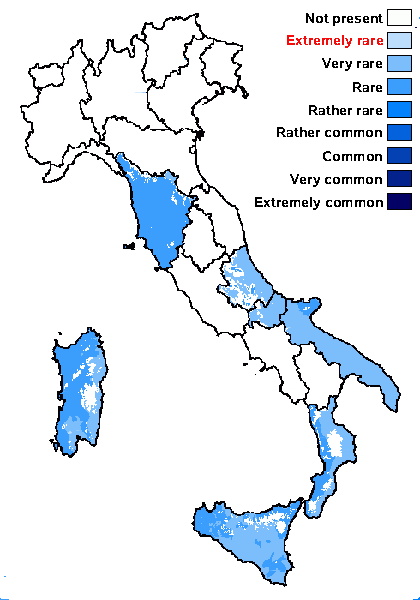
Predictive model
Herbarium samples
Growth form: Crustose
Substrata: rocks
Photobiont: green algae other than Trentepohlia
Reproductive strategy: mainly sexual
Commonnes-rarity: (info)
Alpine belt: absent
Subalpine belt: absent
Oromediterranean belt: absent
Montane belt: absent
Submediterranean belt: very rare
Padanian area: absent
Humid submediterranean belt: rare
Humid mediterranean belt: rare
Dry mediterranean belt: very rare

Predictive model
| Herbarium samples |
 Index Fungorum
Index Fungorum
 GBIF
GBIF
